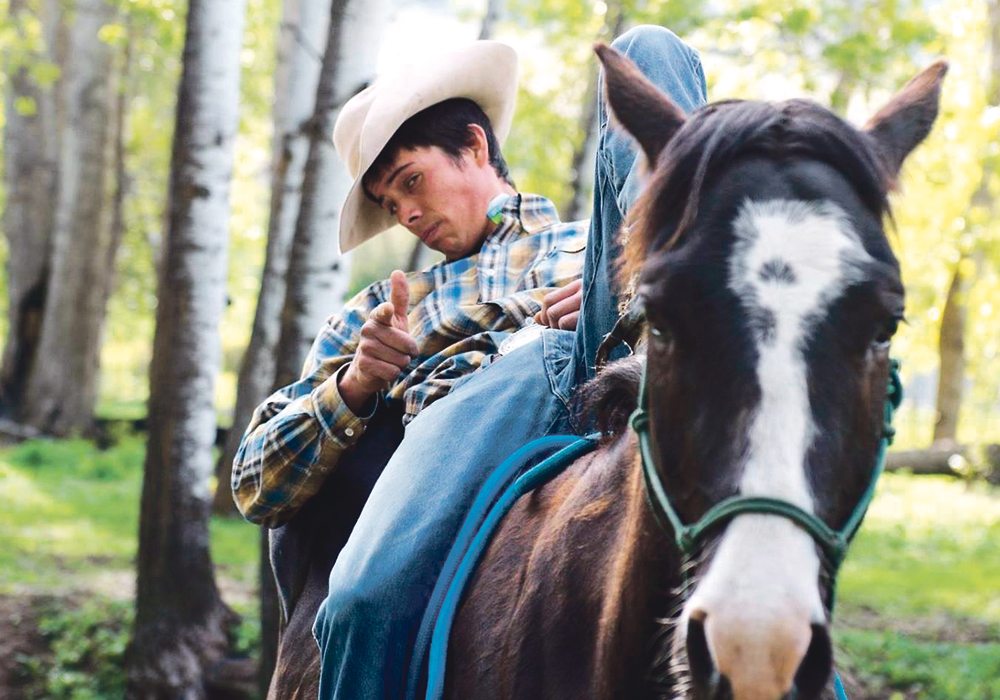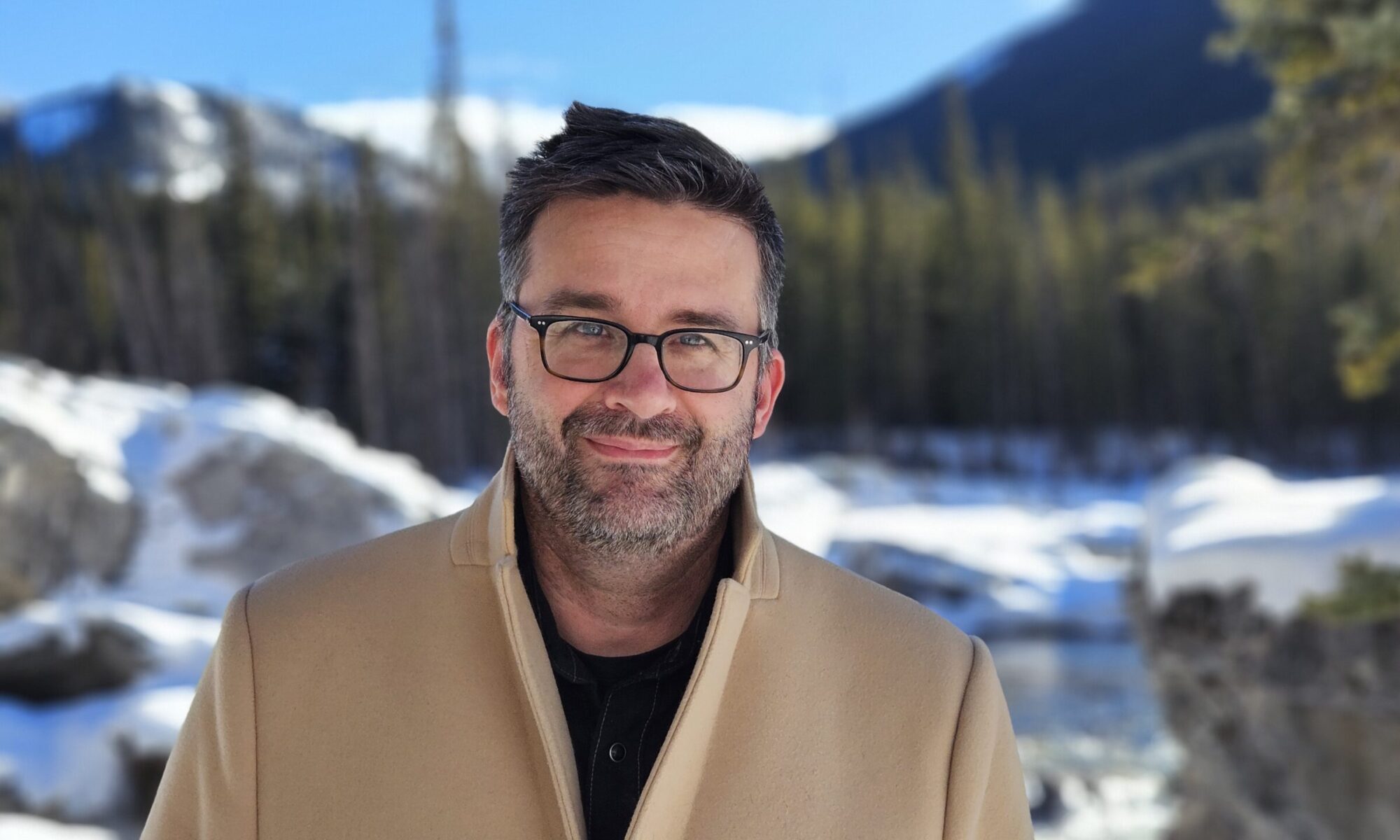
Jordan Camille lives at the northwestern tip of the great western desert, which stretches from Durango, Mexico, to the Deadman Valley west of Kamloops, B.C.
Cactus and sagebrush covered hills reach up to burned-out, pine-covered mountains. Mile-high limestone and basalt cliffs preside over alfalfa crops in summer. In winter, brown grass and snow mix with cattle on the open range.
Camille, a member of the Tk‘emlúpsemc First Nation, is a natural horseman, which is a philosophy of horse handling based on the horse’s natural instincts.
Tk‘emlúpsemc means people of the confluence, and the name has special meaning for Camille, who lives with his family near the intersection of the Thompson and Deadman rivers.
Straddling two rivers and two worlds, the Camille acreage is walking distance from Skeetchestn village, characterized by an old white church, a fenced-off graveyard and a new school.
Camille’s operation, with its poplar trees and covered arena, serves as horse-training centre and equine psychiatric hospital, a place where petulant geldings, ill-tempered mares and their owners come for direction and healing.
The doctor is in today. Camille, 32, clad in dusty blue coveralls and a silver belly hat, is writing prescriptions for gentleness.
“Great horses are the result of respectful relationships,” he says. “Considerate and mindful teachings lead us down the path of excellence.”
A chattering magpie lands on the corral fencepost as Camille removes his hat. Steam rises from his thick black hair. He stands about six feet tall and looks about 20 years old.
“This all started before I could even walk,” says the father of three boys.
“The Kamloops Indian Band is really rich with horsemen and cowboys. I was just lucky enough to be born at the right time and into the right community. But like any reserve, there are gangs and violence.
“My mother, Marlene, was very strict … .
“There were times when she seemed like the meanest person in the world, but our relationship has grown between then and now. I give her a lot of credit for where I’m at.”
Camille looks skyward. Low clouds hang in the valley. An empty logging truck rattles up the Deadman-Vidette Road. He walks toward the river.
“When I was 11, I had to irrigate the hayfield next to my house. I wasn’t like some of the other kids, who just turned their horses out to range.”
After high school, Camille attended Olds College in Alberta and became a bronc rider on the western Canadian rodeo circuit. After multiple concussions and a broken shoulder, he became a racehorse exercise rider in Edmonton.
“I got thrown off a lot. I was really broke too. I had time to think about my relationships on my long walks home.”
Camille’s painful experiences gradually formed the axis of his career in natural horsemanship.
He moved to the Deadman Valley in 2011, and married his wife, Candice, in 2012.
“Respect, plus confidence, equals an understanding,” says Camille.
“That’s the essence of good horse-human relationships. Is the horse going to respectfully move his feet in a manner that I ask? I don’t want an impulsive horse who’s going to run off or buck or hide.”
Camille is a student of world-renowned horse trainer Glenn Stewart, who operates a natural horsemanship ranch outside Fort St. John, B.C.
Camille says natural horse training methods focus on time and building a relationship with the animals.
“As Glenn Stewart says, the horse doesn’t care if you have a saddle with pink hearts all over it, or an $80,000 truck and trailer rig. Horses care about the time you spend with them.”
Camille says there are bad examples of horse-human relationships.
“Sometimes the equation gets out of balance. You can have a horse that’s confident, but also disrespectful. So, when you ask for respect, you don’t get it.
“People will say they have a good relationship with their horse. But then you look at them and the horse is walking all over them,” says Camille.
“They’re shoving it away during feed time. That’s not a good relationship, but some people will believe it is.
He says people who buy a horse must be realistic about what they want and what they have to offer.
Positive reinforcement, he says, is critical. The horse should be rewarded even for small attempts at a task.
As well, he says, horse trainers have to be careful not to lower their overall expectations because it’s important to build from the small attempts.
“We don’t want a 50 percent outcome. We want 100 percent. Find a balance. You can overcook a lesson and it can cause the horse to become arena-sour.
“They’ll hate their job.”
Camille says he looks at horses the same way he looks at people.
“Do I want someone who’s going to steal from me, or stab me in the back and rape me when I’m not looking?”
Camille throws a rock into the river. It skips off a boulder and lands on the other side. Light snow is falling.
The Deadman Vidette Road serves as a time machine that ushers people into the future and into the past. Where they land depends on their chosen direction. The valley’s rattlesnake hills and arid cliffs carry the echoes of western history.
Here, in this landscape, Camille seems to straddle both future and past.First
